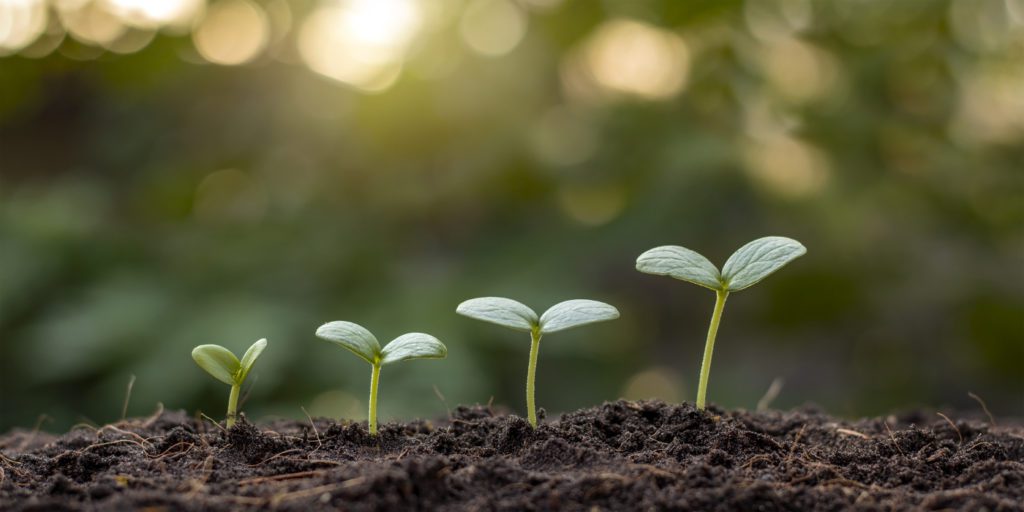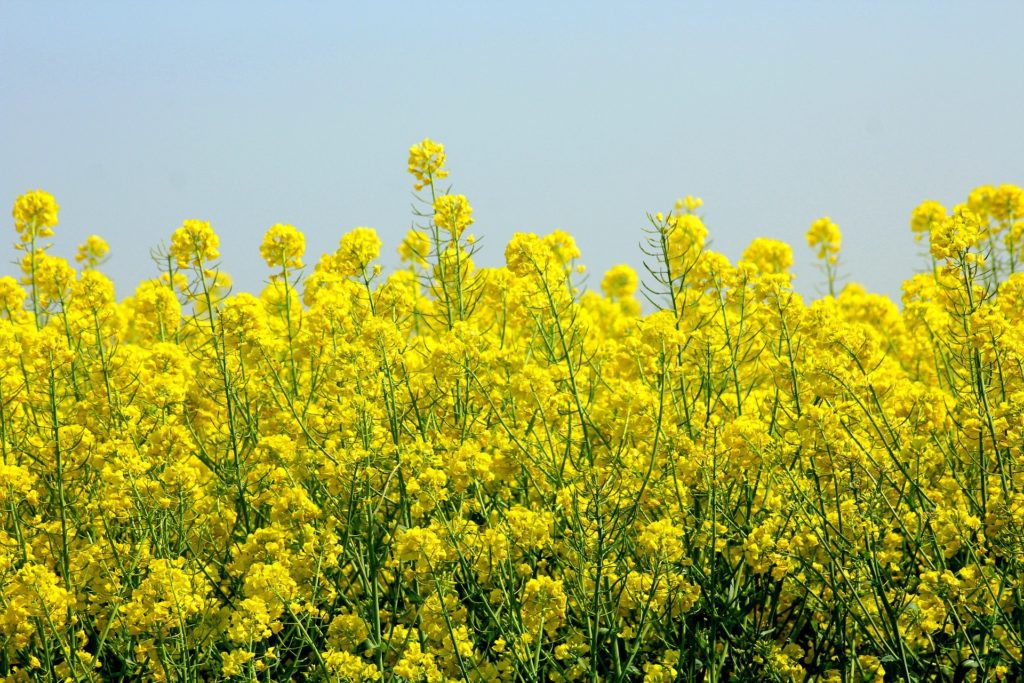Plant vigour is a critical component to success in farming. A plant with good vigour is able to establish stand quickly, uniformly, and robustly, ensuring its ability to thrive. An individual plant’s vigour is determined by the genetics of its seed and the environment the seed is planted in. This means the foundation for a successful harvest is laid at the very beginning of the season. A way to optimize plant vigour is to focus on soil health right at planting.

Director of Ag Science for Heliae® Agriculture
At Heliae® Agriculture, we have a deep understanding of the science behind soil health and how critical healthy soils are to grower success. That’s why our PhycoTerra® product line was developed to help growers promote soil health practically in the field and throughout the growing season. When you improve soil health, you give plants a better place to live and grow. That means creating a soil environment that allows plants the very best chance to develop good vigour. This in turn will help them to withstand the variety of abiotic stresses – such as drought, flood, heat, cold, etc.– that occur during a growing season.
Your seed and your soil start with a certain amount of potential. You can’t change your seed’s genetics, but you can create an environment where it fulfills the utmost potential of those genetics. You can’t change your soil type – whether it be loamy or sandy – but you can optimize your soil’s health and see measurable results.
Soil health refers to the biological integrity of your soil – how “alive” it is, and its ability to successfully support a grower’s goals. Microbes – microscopic organisms, like bacteria and fungi, that live in the soil and make up the soil microbiome – are a key indicator of biological integrity. They do important jobs in the soil for the plant and are a foundational driver of soil health.
Here’s the catch – 75% of the microbes in a farm’s soil are inactive. Microbes need a proper food source to work for the plant, but modern farming practices can starve the microbes of what they need. When they starve, they go dormant as a survival strategy and, when dormant, they’re inactive and don’t do the jobs that the seed and the soil need to optimize health.
We created PhycoTerra® products to feed the microbes what they need and put them back to work for the grower. Both the seed and the soil have their own unique microbiome. When the seed is planted, the seed and the microbes living on the seed have their first interaction with the soil and the microbes living in the soil – this zone of interaction is called the spermosphere. This crucial window is a perfect opportunity to feed microbes on both the seed and in the soil to optimize plant vigour. This allows a grower to bring a crop to its full potential, and our product portfolio promotes microbe activity in this window.
Here’s how it works: The spermosphere is small (between 2 and 12 mm) and short-lived (it ends when the seed germinates), but its impact on potential yield is mighty. As the seed’s first real-world interaction with the soil, it’s a tiny window of opportunity with a big part to play in a seed’s start and eventual success.
Seeds have the ability to reallocate carbon from the seed coat and push it out into the spermosphere, providing a snack to the microbes in the soil. This acts as a way for the seed to recruit microbes to go to work for it, freeing up nitrogen and potassium and helping create glue-like substances that hold the soil together.
Our seed treatment, PhycoTerra® ST*, is an award-winning formulation that supercharges the seed microbiome by adding a high-quality carbon source for your seed. By putting a coat of carbon around the seed, you’re depositing a big cheque into that seed’s bank account which the seed can then use to recruit those microbial workers. Bottom line: PhycoTerra® ST* allows the seed to pay for a lot more microbial work than it could on its own.

PhycoTerra® ST* has a unique mode-of-action that helps improve crop establishment and yield while being applied at low rates. We’ve seen tremendous results in the field on small grains, canola, soybeans, and even corn seed. PhycoTerra® ST* also offers convenient mixability with your existing seed treatment program, including insecticides, fungicides, and inoculants.
Once that seed germinates, the spermosphere transforms into the rhizosphere — the root zone where the growing plant continues to interact with the soil microbes. The rhizosphere is the focus of our flagship product, PhycoTerra® soil microbial food. PhycoTerra® is a pasteurized liquid formulation with excellent mixability in the field and a wide window of application – from around planting to in-furrow, side banded, and pre-emergence.
PhycoTerra® is a superior soil microbial food utilizing specific strains of microalgae to feed these microbes. Microalgae are single-celled organisms that, like plants, photosynthesize and play an important role in our ecosystems. Invisible to the naked eye, microalgae form the base of our food system and produce half the oxygen in the atmosphere.
Specific strains of microalgae are an ideal food source for the soil microbiome because they naturally contain a mix of carbohydrates, proteins, and lipids. This “balanced meal” nourishes the bacteria and fungi in the soil that make plants grow. That makes those microalgae a natural, sustainable way to wake up dormant microbes, boost the health of your soil, and garner higher crop yields.
When we bolster the health of both the soil and seed microbiomes together, we create a harmonized growing environment that can optimize plant vigour as well as the grower’s bottom line.
*PhycoTerra® ST is currently only registered for use in the United States.













